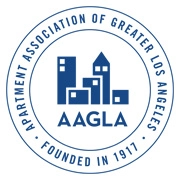
Starting real estate investing is thrilling but can be a lot to take in, especially when looking at the East Coast vs. West Coast. Each area has its pros and cons, like population density, job opportunities, potential rental income, and tax implications. Knowing these differences helps you succeed, get the most from your investment, and cut down on risks.
We’ve put together a guide to simplify these details and offer advice. This will help you make informed decisions and succeed in rental property investment.
East Coast Rental Market Overview:

The East Coast shines with its bustling cities like New York, Boston, and D.C., all buzzing economic hubs with lots of job opportunities and a hot rental scene. But with that comes higher rent and tough competition for housing.
Looking ahead to 2024, the East Coast’s rental scene is only getting brighter. The Northeast is expected to see rents rise by almost 3% and a slight boost in housing options by 1.5%. The Mid-Atlantic is not far behind, with rents predicted to increase by about 2.5% and more available rentals by 3%. This growth comes from a strong demand for housing without a huge increase in supply to meet it.
Boston real real estate expert Seth Williams from Reference Real Estate highlights Boston’s unique position. Its dense population, strong job market, top-notch universities, and thriving tech scene keep rental demand sky-high. Right now, renting a one-bedroom in Boston could cost you about $2,500 a month, and good luck finding a spot—occupancy rates in top neighborhoods are over 95%!
For those looking to invest in property, the East Coast offers a land of opportunity. Thanks to its robust demand, scarce supply, and varied economy, it’s a ripe market for those looking to dive into real estate.
West Coast Rental Market Overview:

The rental market on the West Coast has both ups and downs. Some places are seeing rents drop, while others are still going up. This will keep happening into 2024 and 2025, with a tiny drop in rents overall.
A lot of new buildings are being built, which should help balance things out. Meanwhile, states like Texas and Florida are booming. Texas, especially around Dallas, is building tons of apartments.
The rental market changes because of the number of people moving to an area, the job market’s performance, and other economic factors. The West Coast usually has lots of jobs and a strong economy, making more people want to live there. But because not many new houses are being built and they’re expensive to make, prices and rents might keep going up.
Comparing the Two Markets:
It’s decision time! Each coast has its special feel, influenced by things like living costs, house prices, and how much money you could make from renting out. Plus, there’s how quickly your investment could balloon, the landlord-tenant power play, and even taxes to think about. Let’s dive into what sets these two markets apart, making it clearer for you to decide where your next investment should be.
Cost of Living and Property Prices
The East Coast, including New York and Boston, is expensive because there are lots of jobs, people want to live there, and property prices are high. The West Coast, with places like Los Angeles and San Francisco, also has high house prices, mainly because of the big tech industry and not enough houses. However, living on the West Coast is usually more relaxed and cheaper than living on the East Coast. So, from an investor’s viewpoint, the East Coast wins a point here.
Rental Income Potential
With bustling cities like New York and Boston, the East Coast is a goldmine for rental income. High demand and limited supply mean properties are rarely empty, translating to more money in your pocket. Now, the West Coast, think San Francisco and Los Angeles, might seem less appealing at first glance due to its high living costs and scarce housing. But don’t be fooled; its booming job market and undying demand for housing still make it a solid choice for earning a decent rental income. So, whether East or West, your investment could really pay off.
Property Appreciation Rates
The West Coast usually gets better property appreciation rates than the East Coast, thanks to its strong job market, high demand for housing, and not enough supply. Cities like San Francisco and Los Angeles have also enjoyed big increases in property values, thanks to the booming tech scene and the tight squeeze on housing.
Tax Implications and Incentives
Here, things are getting interesting! The East Coast, especially places like New York and Boston, has higher taxes. This means landlords there might make less money because of high property taxes. But, on the West Coast, in cities like San Francisco and Los Angeles, taxes are lower. This includes lower property taxes, making these areas more appealing to investors. Also, the West Coast is better for real estate investors when it comes to paying less in taxes on profits and rental income.
Which is Good for A Property Investor?
Looking at the comparison, the West Coast often comes out on top as a better place for rental income, thanks to its solid job market and big demand for housing. Cities like San Francisco and Los Angeles see lots of people looking for places to live, meaning landlords can enjoy higher rental income. Plus, the West Coast is friendly to real estate investors when it comes to taxes, offering lower property taxes and more chill rules on rental income.








